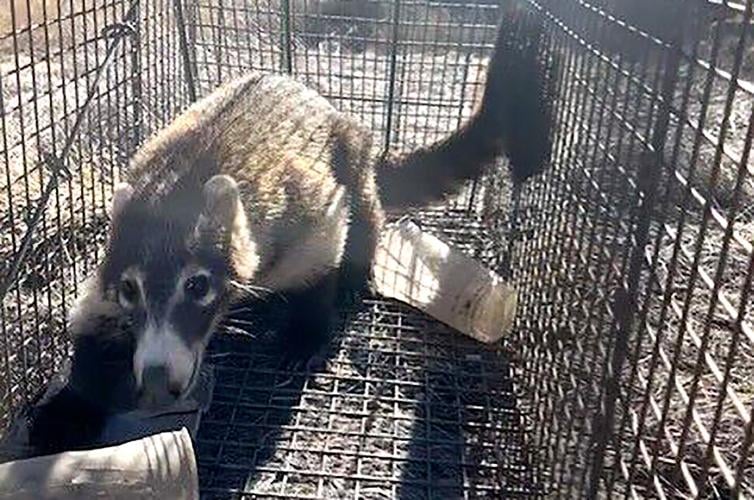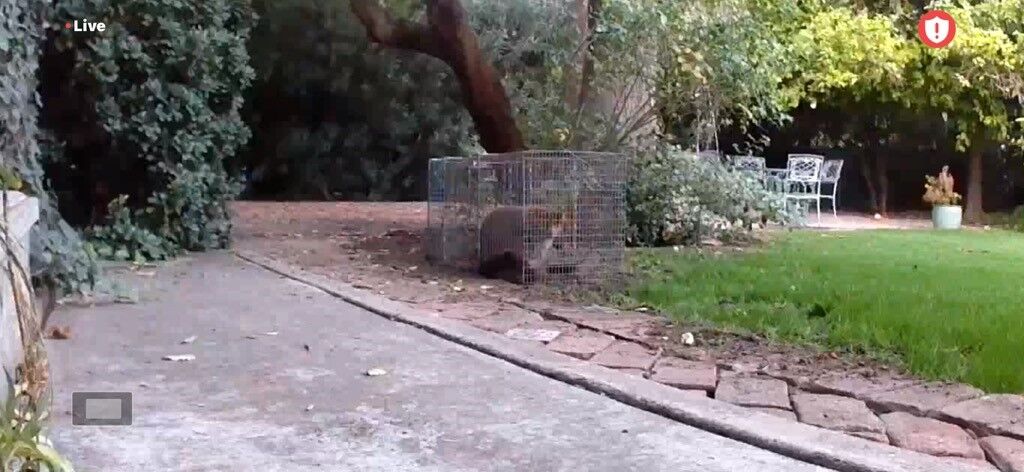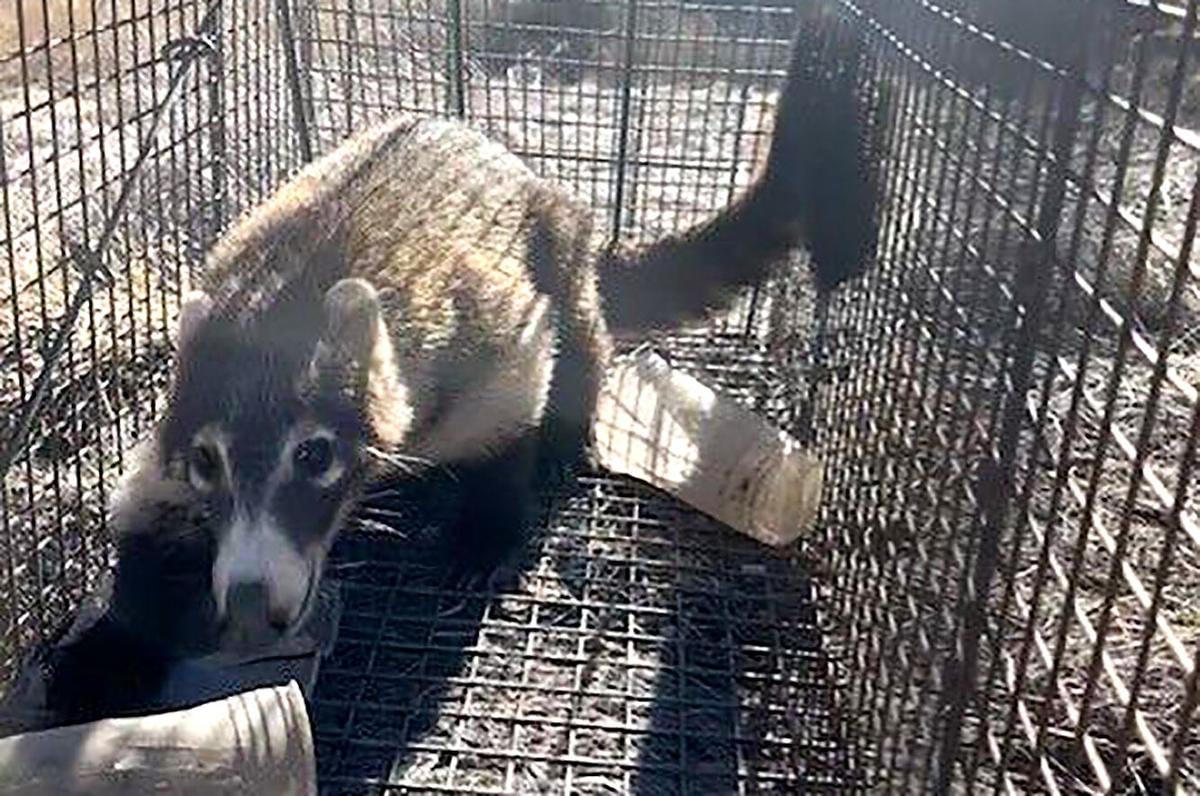A masked bandit that was caught lurking around a historic mansion in downtown Tucson has been released on his own recognizance at Catalina State Park.
An adult coatimundi was captured Wednesday by longtime local wildlife control company Animal Experts Inc. after tearing up the lawn at a mansion on Main Avenue that now serves as a wedding venue.
It was the first coati Animal Experts owners Jeff Carver and Marc Hammond have seen downtown in more than 30 years in the wildlife business.
“We’ve never had one anywhere near there before,” Carver said.
He thinks the roughly 30-pound animal — sort of a stretched-out raccoon with a long snout and an expressive, 2-foot tail — was feeding on nearby fruit trees and digging for grubs in the mansion’s lush lawn.
Watch Now: A coati caught at a historic mansion downtown is released back into the desert outside Tucson.
Carver declined to identify which mansion it was because the owners didn’t want the publicity, but he described the place as a “very plush Tucson treasure” that was built in 1898.
After using motion-sensing wildlife cameras to confirm that the coati wasn’t part of a group, Carver set up a live trap baited with mealworms, nightcrawlers and chicken eggs in hopes of catching the solitary animal. “He went for it on the very first night,” he said.

This coatimundi was caught in a trap Wednesday at a historic mansion in downtown Tucson.
Carver suspects this was the same coati that showed up on the roof and in the attic of a house in the nearby Armory Park neighborhood earlier this month.
“A lot of the calls we handle are the same, so it was just really cool to be around an unusual animal like this,” he said.
According to the Arizona-Sonora Desert Museum, coatis usually spend the summer in mountain canyons, then move to lower-elevation riparian and desert areas in winter.
They are omnivores that dig in the dirt and leaves for bugs or feed on fruit, nuts, eggs, rodents, snakes, lizards and carrion.
Coatis are social animals, living in bands of 30 or more females and their young. Adult males are only welcomed into the group during mating season, though lone males may follow the band at other times.
Carver scooped up the caged, stressed out critter Wednesday morning and drove him to the state park on Tucson’s northwest side, where he got permission from park officials before letting the animal go.
As soon as he opened the cage in a clearing a short walk from one of the hiking trails, the coati bolted through the opening and disappeared into the brush in a matter of seconds.
“He just shot out of there,” Carver said.
He hopes the animal will find a new home with an existing band of coatis along the western flank of the Catalinas.
He’s certainly better off there than he would have been downtown, Carver said.






